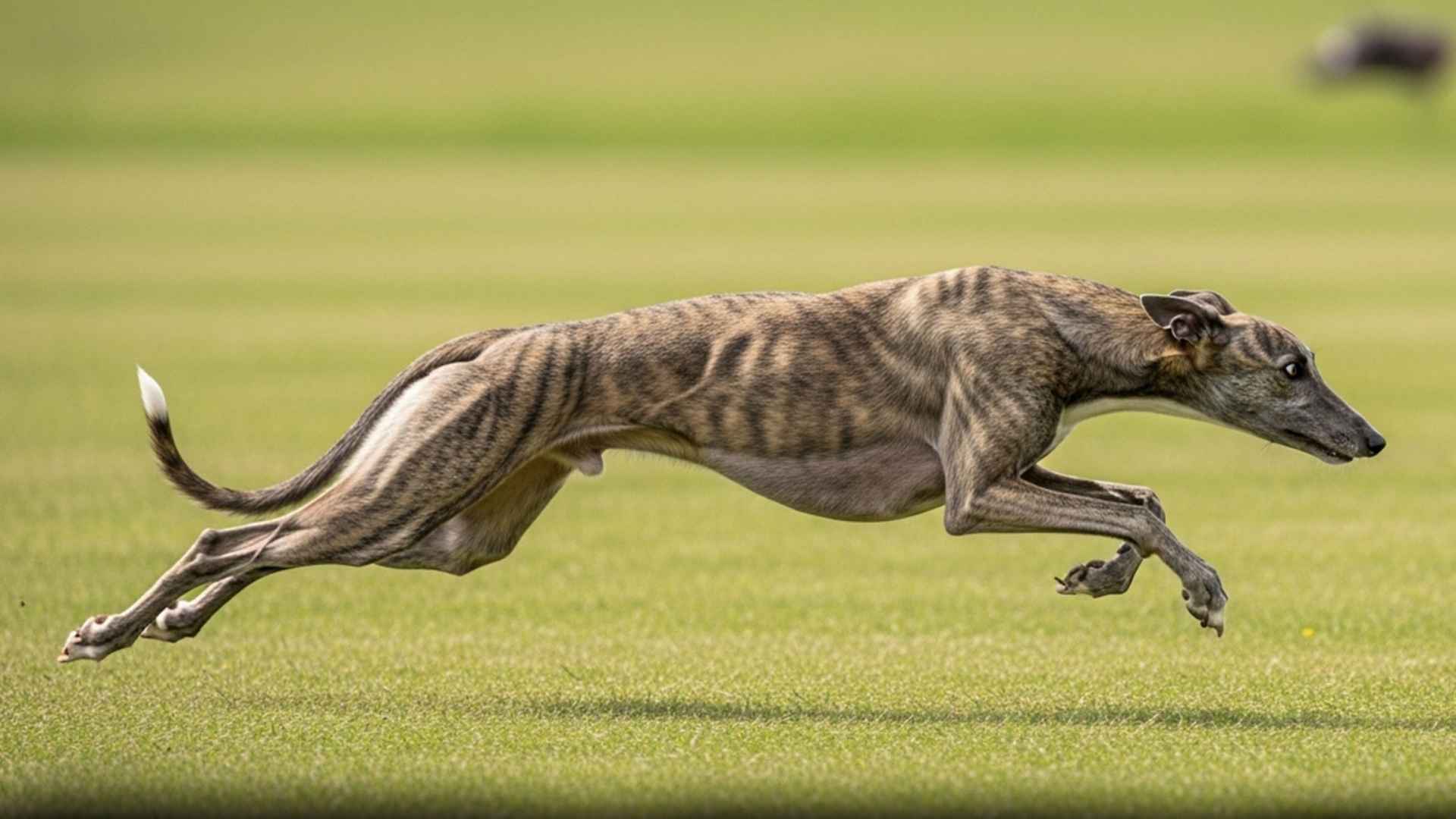Picture this: you’re out for a walk when your dog suddenly locks eyes on a squirrel. In an instant, they’re off—tail high, ears up, heart racing. That instinct to chase isn’t mischief; it’s prey drive, a deeply ingrained behavior in certain breeds. While thrilling to witness, it can also be a challenge for owners.
Prey drive is the natural instinct to chase, stalk, or capture moving targets. It comes from a dog’s ancestral roots, where hunting was essential for survival.
In some breeds, this instinct has been carefully preserved, making them exceptional hunters, workers, and athletes even today. However, in a household setting, it requires careful training and management.
Dogs with high prey drive are energetic, alert, and often happiest when they have a “job” to do. They thrive in active homes that can channel their instincts into healthy outlets like agility training, fetch, or scent work.
Here, we’ll uncover the breeds known for their strong prey drive, explore why this instinct runs so deep, and share tips for keeping both your dog and your neighborhood wildlife safe. If you love energy, intensity, and spirit, these breeds might be your perfect match.
Did you know? Dogs with high prey drive were originally bred for hunting and chasing. Without proper outlets, this instinct can turn into mischievous behaviors like chasing squirrels—or even your neighbor’s cat!
Dog Breeds With Strong Prey Drive
1. Greyhound

When it comes to prey drive, the Greyhound is the undisputed champion. As classic sighthounds, they were bred to spot movement across great distances and launch into action—chasing down hares, rabbits, and just about anything that dared to run.
With a top speed of over 35 miles per hour, once a Greyhound takes off, catching them is… let’s just say, not likely. (Unless you own a race car.) They’re also famously sweet with strangers and affectionate with family—basically the social butterflies of the dog world, just with jet engines for legs.
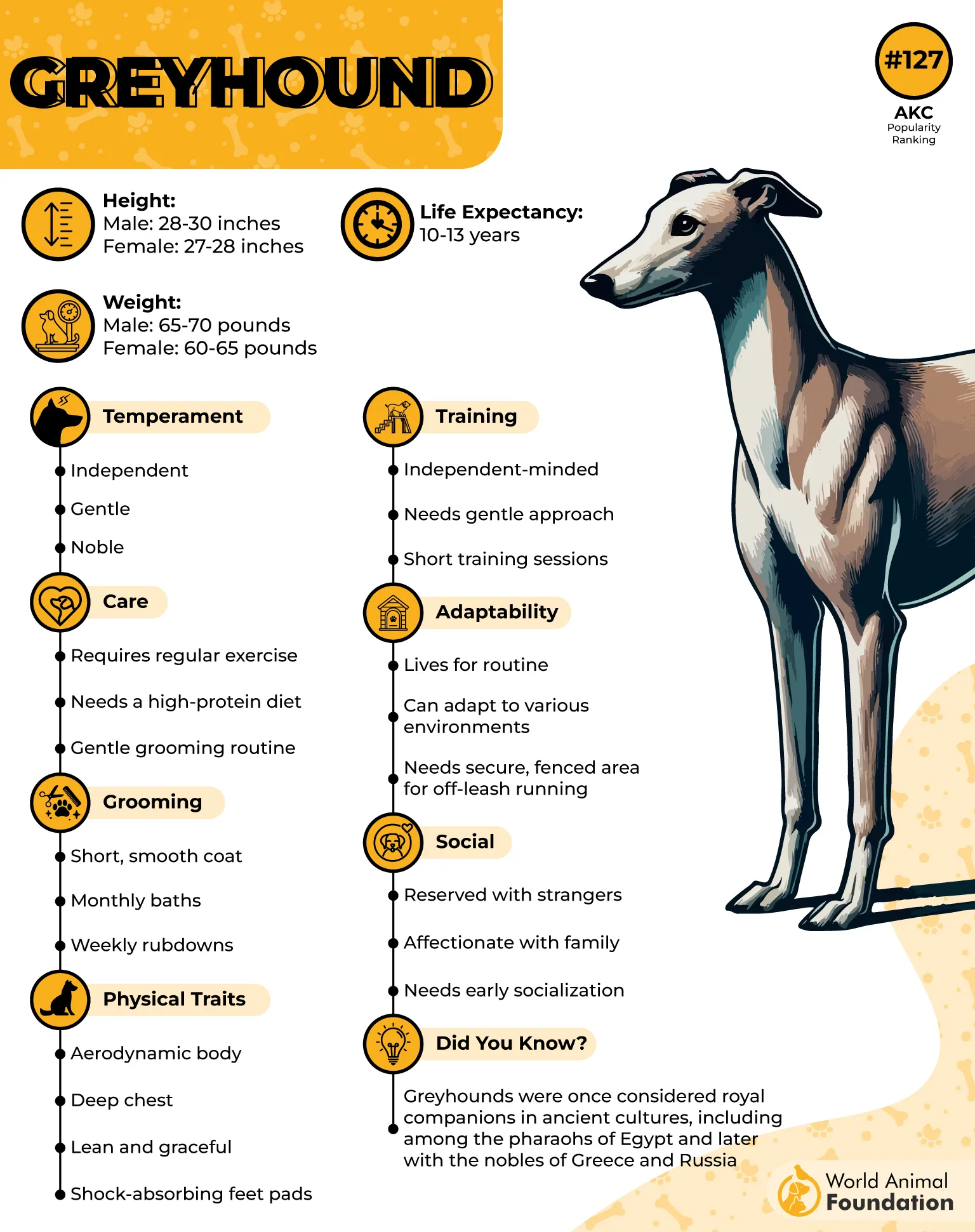
Outdoors: sleek, aerodynamic sprinters who transform into four-legged rockets the second a squirrel twitches.
Indoors: professional loungers who can—and will—sleep for 18 hours a day, preferably draped across your couch like a lazy supermodel.
Despite their high chase drive, Greyhounds are surprisingly mellow companions. They’re not big barkers (Wikipedia even notes they rarely bark at all), which makes them excellent fits for suburban or urban living.
The bottom line: Greyhounds are equal parts athlete and nap enthusiast. They’ll chase like the wind outdoors, then come inside and snuggle like they never left the couch. But remember—if it moves and they’re off-leash, you’d better have good running shoes.
2. Siberian Husky
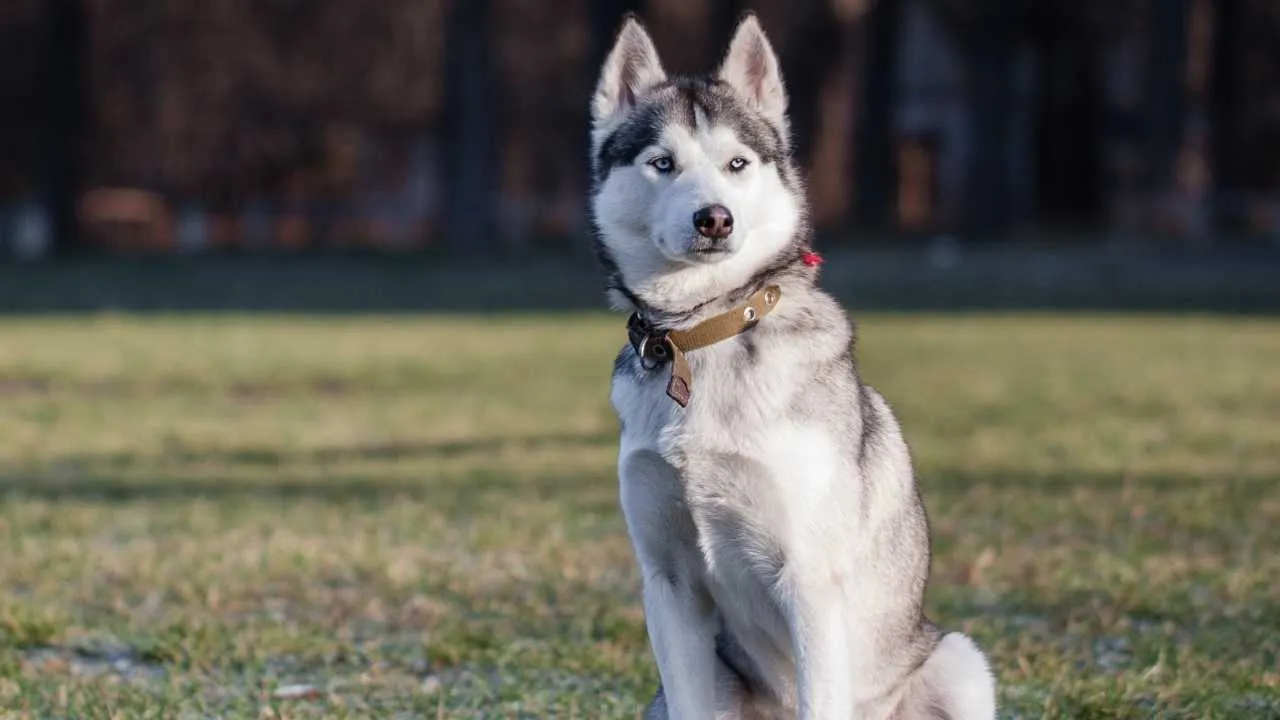
Siberian Huskies may be best known for pulling sleds across snowy landscapes, but don’t let that wholesome image fool you. Beneath the fluffy fur and striking blue eyes lies a serious prey drive.
Back in the day, when they weren’t working as sled dogs, Huskies often roamed freely and hunted small animals to supplement their diets. That instinct didn’t just vanish once they became family pets.
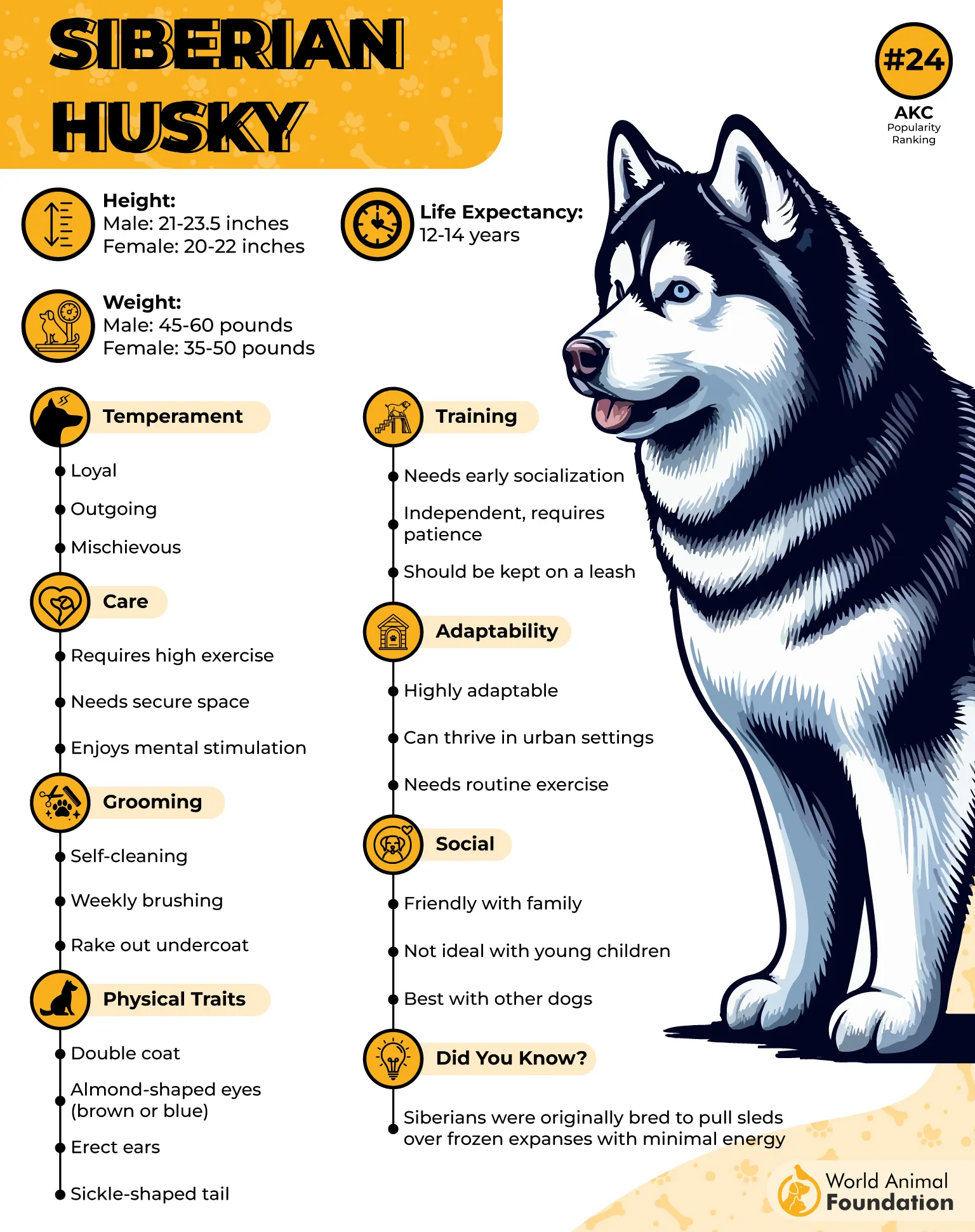
Today’s Huskies still love to chase—and they’re not picky about the target. Squirrels, rabbits, cats, even a rogue leaf blowing across the yard—if it moves, it’s fair game. Some well-fed Huskies might resist the urge, but others? They’re basically always ready for “The Hunt, Part II.”
Here’s what life with a Husky looks like:
Outdoors: graceful runners with Olympic-level stamina, always searching for their next chase.
Indoors: lovable goofballs who will sing you the song of their people at inconvenient hours.
One thing’s for sure: fences are not optional with this breed. WebMD warns Huskies can jump surprisingly high, so unless your fence is at least six feet tall, your dog might turn into the neighborhood’s newest explorer.
And forget about letting them off-leash in an open space—once they start running, good luck catching them. Siberian Huskies are adventurous, independent, and full of personality.
Just remember: they’re more wolf-like than most dogs you’ll meet, which means their prey drive is hardwired deep. Owning one is a mix of admiration, exercise, and making sure you don’t accidentally star in The Great Husky Escape every weekend.
3. Jack Russell Terrier
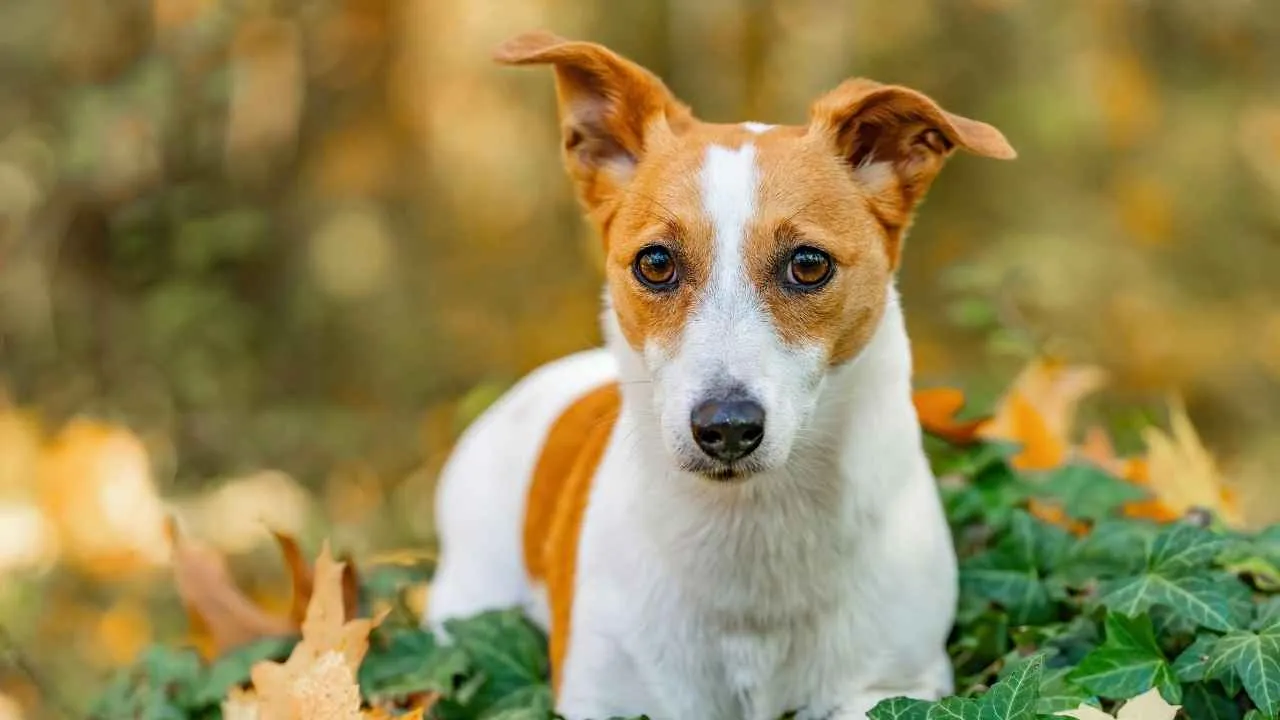
Don’t let the small size fool you—Jack Russell Terriers are basically the adrenaline junkies of the dog world. Originally bred for fox hunting, these little dynamos weren’t just tagging along behind the horses. Nope, their job was to dive into fox dens, flush the foxes out, and keep the hunt moving.
That heritage is still very much alive in today’s Jack Russells. Their prey drive is set to “maximum overdrive,” which means anything that moves is fair game—cats, squirrels, rabbits, even the occasional car.
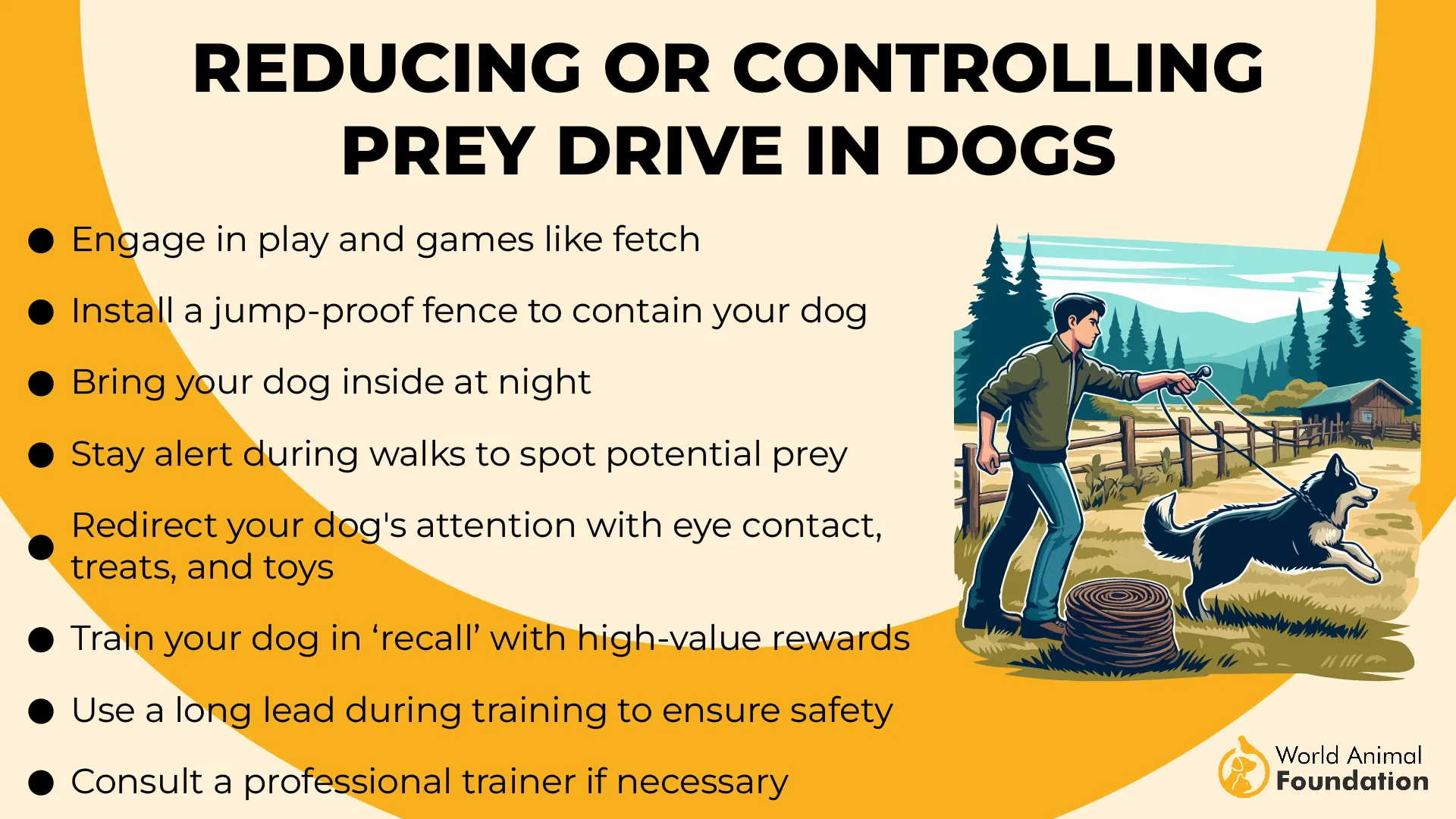
Outdoors: tiny missiles of energy, nose to the ground, legs pumping, brain locked onto “CHARGE!” mode.
Indoors: They’re curious explorers who might turn your living room into an obstacle course if you don’t keep them busy.

These pups are wicked smart, full of personality, and endlessly entertaining—but they’re also escape artists. A loose fence? A gap in the gate? That’s just an open invitation for adventure. If you have a Jack Russell, a secure yard is a must; otherwise, you’ll find yourself chasing them instead of the other way around.
Bottom line: Jack Russells are pint-sized bundles of dynamite. They thrive on exercise, mental challenges, and structure. Without it, they’ll happily invent their own hobbies—like digging craters in your yard or terrorizing the neighborhood squirrels.
4. Border Collie

If dogs had Ivy League schools, the Border Collie would be valedictorian, class president, and probably teaching half the classes, too. Known as one of the smartest breeds in the world, these pups don’t just want a job—they need one. And when it comes to prey drive, their “job” is usually chasing anything that moves.
Originally bred for herding sheep, Border Collies have an instinct that’s basically a turbo-charged version of “keep the flock in line.” The problem is, in modern life, the “flock” might be your kids, the neighbor’s cat, or even joggers passing by. If it’s moving, your Border Collie is taking notes and preparing a tactical chase.
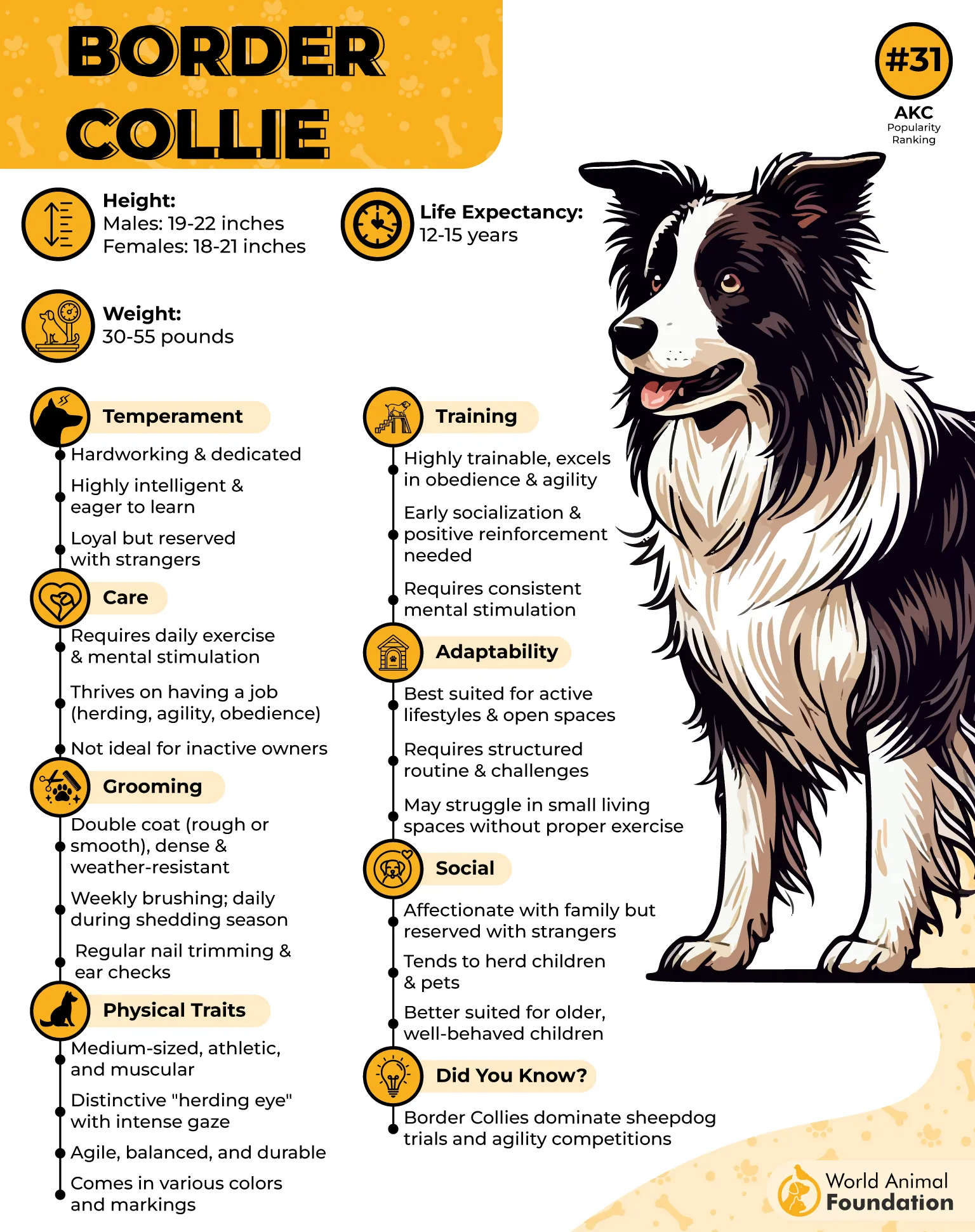
Outdoors: lightning-fast, laser-focused herders, ready to put in overtime without asking for a raise.
Indoors: restless geniuses who might start reorganizing the furniture if they’re bored.
Border Collies are incredibly loving and devoted, but they aren’t exactly “low-maintenance.” Without enough mental and physical stimulation, they can become little chaos coordinators—herding, barking, and running laps around your sanity.
Still, when their energy is channeled properly, Border Collies are breathtaking to watch in action. They’re the ultimate example of brains meeting instinct. Just… don’t expect them to ignore a squirrel. Or a car. Or a leaf blowing across the driveway.
5. Rhodesian Ridgeback

The Rhodesian Ridgeback isn’t just another pretty face with a cool hairstyle—though that trademark strip of fur running backward down its spine is undeniably iconic.
This breed earned its stripes (literally) in Africa, where they were originally bred to track and corner lions. Yes, lions. Imagine having a dog whose job description once included “keep the king of the jungle busy.”

These days, you won’t see Ridgebacks squaring up with big cats, but that deep-rooted instinct is still alive and well. A squirrel, rabbit, or even a drifting plastic bag doesn’t stand a chance once a Ridgeback locks eyes.
Outdoors: fearless hunters, always on high alert for movement.
Indoors: loyal, loving companions who will happily curl up after a long day—preferably on your couch.
Training, socialization, and plenty of exercise are absolutely essential for this breed. Without it, their energy and independence can get the best of them (and you). But with proper guidance, they become incredible family dogs—protective, affectionate, and just a little bit regal.
After all, once you’ve got “lion hunter” in your ancestry, chasing the neighbor’s cat is just a warm-up.
6. Weimaraner
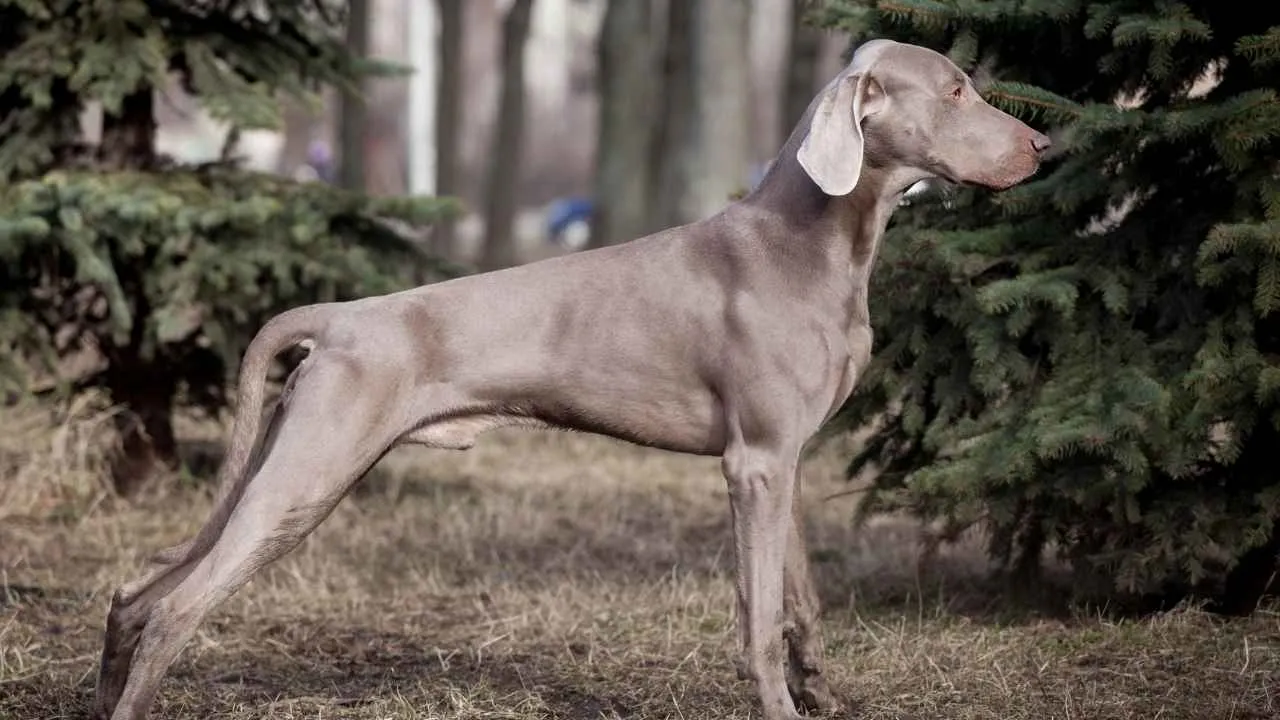
Nicknamed the “Gray Ghost,” the Weimaraner is sleek, striking, and impossible to ignore. But behind that smooth silver coat and soulful eyes lies a dog bred for some seriously hardcore work.
Back in the day, Weimaraners were hunting companions for big game—think bears, boars, and deer. Yep, your elegant couch-snuggler once had “bear hunter” on their résumé.

These days, since most neighborhoods frown on large-game expeditions, their talents are more often directed at smaller prey like birds, rabbits, and foxes. Still, don’t let the downsize fool you—their prey drive is alive and kicking whether they’re in the field or just strolling through your backyard.
Outdoors: high-octane athletes, laser-focused hunters, and possibly faster than your Wi-Fi.
Indoors: affectionate shadows who will follow you from room to room, because personal space is a foreign concept.
One thing to know: Weimaraners and small pets don’t usually mix. That hamster? Temptation. That bunny? An irresistible chase challenge. Unless you enjoy living in a live-action nature documentary, it’s best to keep them in homes without pocket-sized roommates.
Bottom line: the Weimaraner is stunning, loyal, and endlessly energetic—but their instincts never really turn off. Owning one is like living with a marathon runner who also moonlights as a predator.
7. Saluki
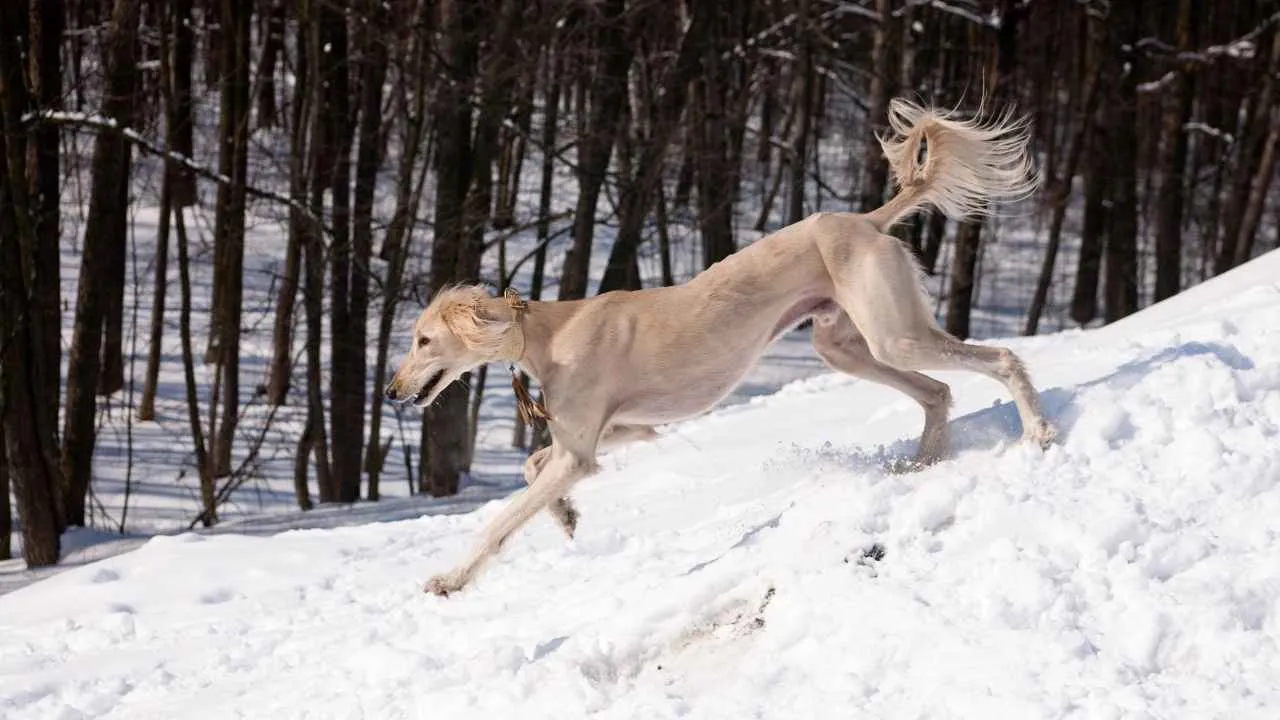
If history had a runway, the Saluki would have been strutting it thousands of years ago. This breed is one of the oldest in existence, treasured by nomadic tribes who relied on its lightning speed to catch dinner. Rabbits, foxes, even gazelles—yep, the Saluki’s prey drive was (and still is) set to “expert mode.”
Like their Greyhound cousins, Salukis are sighthounds, which means their eyes lock onto movement faster than you can say, “Don’t chase that!” Once they see something dart across the yard, it’s game over.
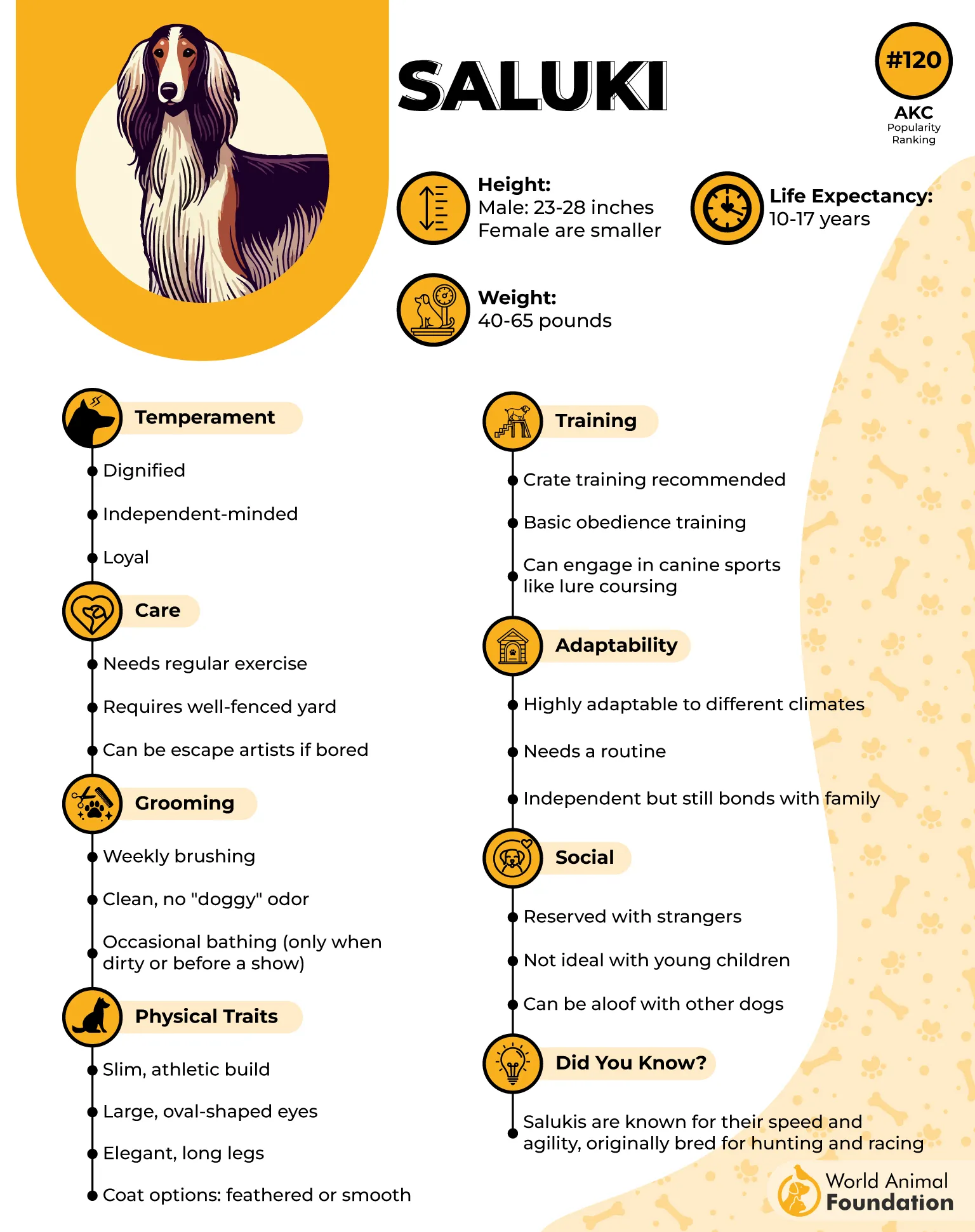
Indoors, they’re graceful, quiet companions who could almost pass as living artwork stretched across your couch.
Outdoors, the second something small and furry twitches, they transform into a four-legged rocket launcher fueled by thousands of years of instinct.
They’re independent thinkers, too, which makes recall training more of a polite suggestion than a guarantee. Imagine inviting a marathon runner to stop mid-race for snacks—they’re not buying it.
But with their elegance, sweet nature, and jaw-dropping athleticism, Salukis are nothing short of fascinating. Just… maybe keep a leash handy unless you enjoy the thrill of watching your dog audition for the role of “fastest thing alive.”
8. Afghan Hound
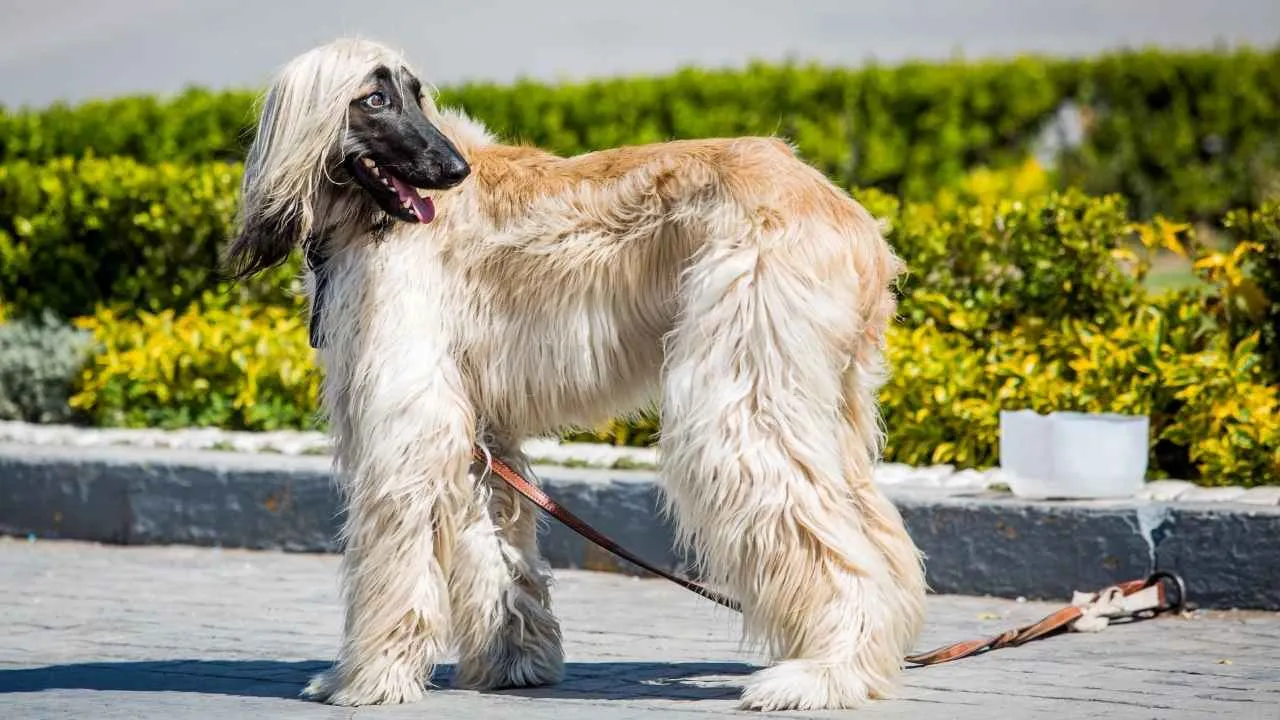
If Vogue ever needed a canine cover star, the Afghan Hound would absolutely steal the spotlight. Flowing, silky hair? Check. Regal posture? Double check. A mysterious, aloof expression that says, “I’m way too fabulous for your nonsense?” Triple check.
But don’t let that runway-ready look fool you. Underneath all that glamour is a lightning-fast hunter with a prey drive strong enough to give squirrels recurring nightmares.

These dogs were originally bred in Afghanistan’s rugged mountains to chase down fleet-footed game like gazelles and hares. Translation: if it runs, the Afghan Hound will happily chase it—preferably while their ears blow dramatically in the wind.
Indoors, they act like royal aristocrats, lounging gracefully as if waiting for someone to feed them grapes.
Outdoors, the second they spot movement, that “regal queen” persona disappears, and suddenly you’ve got a four-legged missile tearing across the landscape at 40 mph.
Living with an Afghan Hound means adjusting to their diva energy. They’re independent, sometimes stubborn, and not the type to live for your approval (sorry, Labrador fans). Think of them as that stylish friend who’s amazing fun but impossible to drag to brunch on time.
Still, their charm is undeniable. Afghans bring a mix of elegance, athleticism, and mischief that makes them unforgettable. Just… maybe don’t expect them to come back when you yell, “Drop the rabbit!”
9. Irish Wolfhound

Think of the Irish Wolfhound as the NBA player of the dog world—tall, lean, and commanding attention everywhere they go. Historically, these dogs weren’t bred just to look impressive in family photos. Nope, their original job description was way more hardcore: hunting wolves and elk. Yep, wolves. As in, “apex predator of the forest.”
Now, despite being colossal in size, Irish Wolfhounds are known for their calm, almost Zen-like personalities.

They’re basically giant couch philosophers when indoors, but that prey drive is hardwired deep in their DNA. A squirrel bolts across the yard? Suddenly, your peaceful wolfhound looks like a medieval knight charging into battle.
But here’s the catch—they’re not aggressive by nature. They won’t randomly pick fights. Instead, their chase instinct comes out when something moves fast. To them, that’s an invitation to play a game of “Catch me if you can” (spoiler: they absolutely can).
You’ll never win a game of tug-of-war.
You’ll need a good leash, because when that prey drive kicks in, it’s like steering a furry freight train.
Despite the intimidating resume, Irish Wolfhounds are big softies with their families—gentle with kids, affectionate with their humans, and prone to thinking they’re lap dogs. Yes, a 150-pound lap dog. Your chiropractor may not approve, but your heart will.
Conclusion
When it comes to high prey drive dogs, it’s important for many owners to remember that this dog’s instinct isn’t bad—it’s a natural behavior. From hounds to hunting dogs like Australian Cattle Dogs, or even pit bulls, the desire to capture prey has been part of their DNA for generations. While many breeds can live peacefully with small pets, small animals, or even two dogs in the same home, it takes careful training methods, supervision, and plenty of outlets for that high energy.
A well-behaved dog is one that gets the right structure: puppies and young dogs especially benefit from play, toys, exercise, and consistent boundaries. Some breeds have the highest prey drive, meaning they’ll require lots of patience, guidance, and strong leadership.
Whether it’s preventing stalking of children in the yard or teaching a new dog how to walk on a lead, the goal is to channel those instincts into positive outlets. In the end, prey drive in dogs is part of what makes them fascinating companions. With the right care, even the most determined chaser can become a balanced, loyal pet—proof that instinct and training can live happily side by side.


